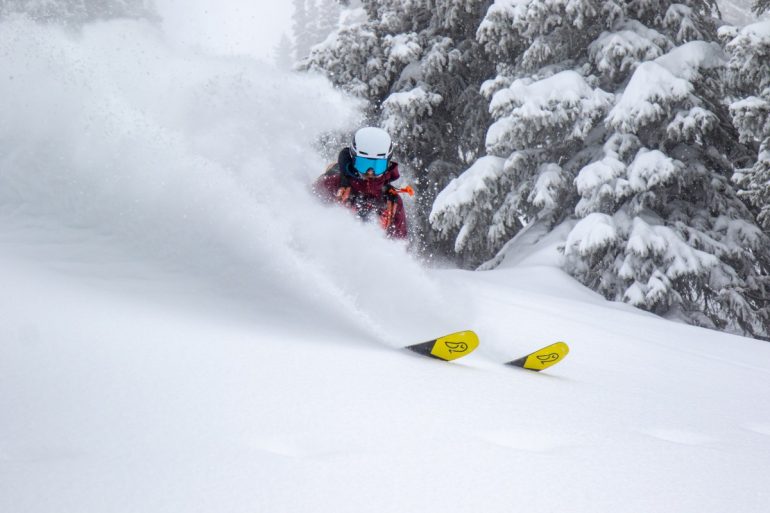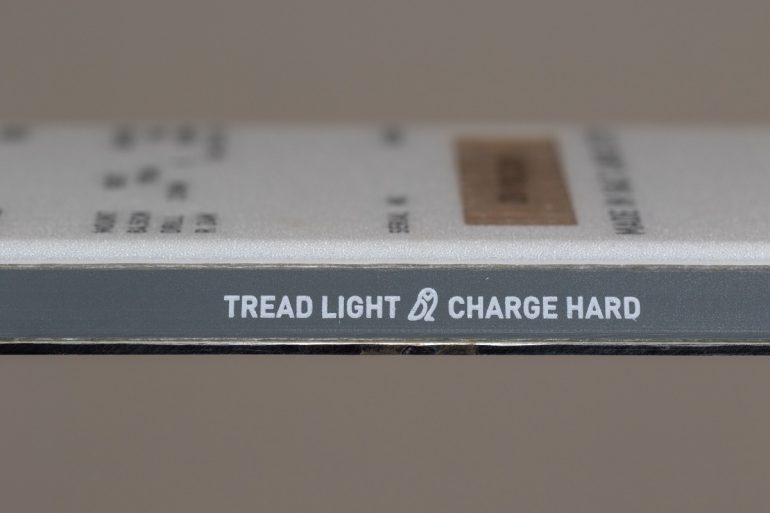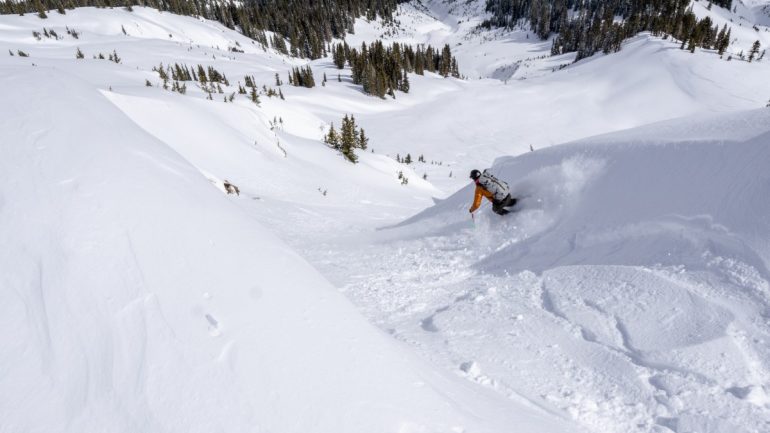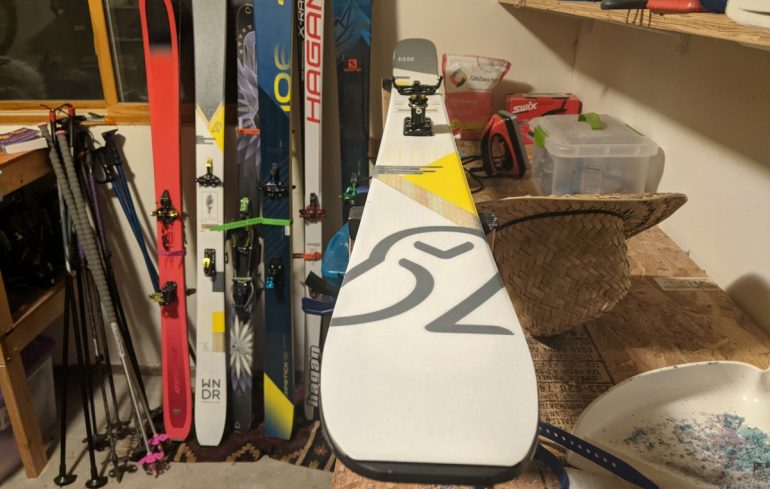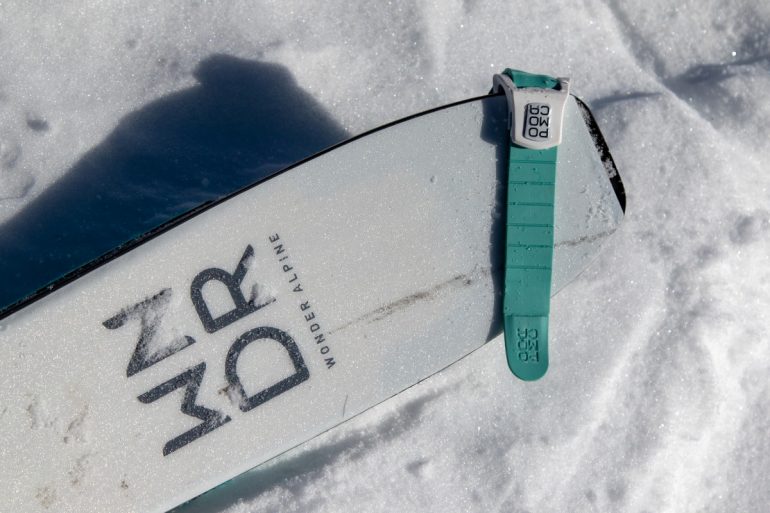In the last few years we have seen more and more ski manufacturers dedicating their resources to backcountry ski design and production. The cutting edge of backcountry skiing is no longer delivered exclusively from boutique companies making gear out of necessity but now growing into the mainstream. The investment is paying off as the design and construction of light-midweight skis are also delivering on performance and exponentially growing access to the sport.
Largely absent from this development is an innovation in the materials used in ski construction. When I first heard about WNDR Alpine, a boutique ski brand partnered with Berkley biomaterials company Checkerspot, my alarm went off for corporate greenwashing. By using sustainable biomaterials, WNDR claimed to make more sustainable skis. Was it worth considering? Or was WNDR just trying to get in my wallet?
Using sustainably manufactured biomaterials in the place of traditional fossil-based oils does have the potential to be an innovative leap in product development. So I took a closer look at the WNR Vital 100, which joined the brand’s flagship WNDR Intention 110 for 20/21. In this review, the cambered version of the WNDR Vital 100 was tested along with the minimalist Black Diamond Helio 145 binding for a setup that honors WNDR’s vision for a light backcountry ski that showcases the use of innovative biomaterials. (Edit: A reader has pointed out that a full-featured binding would be more appropriate for this ski. This ski deserves an opportunity to be skied with a binding that features elasticity and play. Something like the Marker Alpinist, G3 Ion, Fritschi tecton, or Marker Kingpin would better honor the intention behind this ski.)
Materials construction
WNDR’s big innovation is the use of plant-based oils derived from microalgal cells over an industry-standard use of fossil-fuel based polyurethane. This algal oil shows up in a couple of places in the ski, in the stringers that run the length of the ski as well as a liquid poured sidewall.
This is a big step away from the standards materials list used by most ski manufacturers. Paulownia core? Carbon? Fiberglass? Aramid? TPU? ABS? Check, check, and check. So often it’s the same stuff reused in different branded packages. WNDR Alpine is betting big on biomaterials, under the guiding thesis that the use of biomaterials from microalgae will not impair performance, but improve it.
For the WNDR Vital 100, this use of biomaterials shines most brightly in the sidewall construction. WNDR Alpine describes this use of biomaterials as a “cast polyurethane that protects the Algal Core and delivers damping and resistance to impact over edge”. The use of this unique biomaterial also allows WNDR to pour the sidewall biomaterial into the mold and let it adhere into the porous aspen wood core. This innovation effectively creates an incredibly strong bond with the core and delivers a ski with great structural integrity. Functionally, the guiding premise of this ski implies that this construction of a durable and rigid sidewall will translate to supreme edge hold. (See more in Gary Smith’s review of the WNDR Intention 110)
I welcome any brand to push the envelope when it comes to using innovative materials and diversifying the supply chain. The fact that these materials are more sustainably sourced than the alternatives only adds to the excitement around the work that WNDR Alpine is doing. It can only mean good things for the future of skiing.
Shape
Out of the box the first thing that strikes me is the shape — a straight side cut and rounded tip and tail akin to a freeride ski. Looking at the sidecut there is very little change in width from tip to tail lending to a long 24 meter turning radius. This shape is common for freeride boards and typically points to a playful ski.
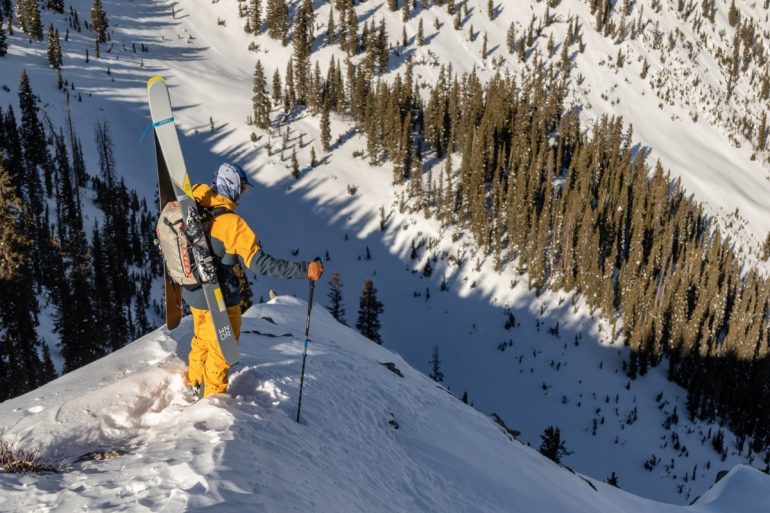
The shape of the Vital 100 points to a playful ski, but proved capable in more demanding settings as well.
This isn’t a big surprise, as WNDR Alpine is the product of Matt Sterbenz, the founder of 4FRNT Skis. The shape of the WNDR Vital 100 is reminiscent of 4FRNTs line of backcountry oriented skis, particularly the 4FRNT Raven or Hoji. Myself not being a person to seek out reverse-cambered skis, I found it welcome to have a 100mm waisted ski with that downhill, hard-charging pedigree and the option for a positively-cambered profile.
How do they ski?
With initial concern for corporate greenwashing, the question arises: do biomaterials provide a noticeable service in this ski construction? Or is it an innovation used to build hype around new plant-based materials? After some time on these skis I am inclined to say that performance is not at all hindered by the use of bio-materials but am still unclear if the overall performance is actually enhanced.
Hopping on these skis it becomes immediately clear how the weight is distributed. The weight is centered underfoot, providing an unexpectedly nimble moment of inertia. Despite the longer turning radius and more directional feel, the weight distribution of the ski still contributes to a playful feel.
Beyond this first-impression, dampening and stiffness become the focal point of the conversation related to the benefits of these new biomaterials. WNDR advertises the use of biomaterials with a capability to increase dampening and torsional rigidity. These two variables have also proved hard to describe while on this particular ski. There is nuance to the ski, it’s one that is definitely not soft but also not incredibly stiff. Perhaps that dynamic is due to the stark difference between tip and tail. The tip is relatively soft and dampens variable snow relatively well. At high speeds I did not find the sort of tip chatter that I would come to expect from a similar light-midweight touring ski. This ski does not achieve the level of dampness that an alpine ski could offer, nor would I expect it to in a light ski. In variable snow I noticed that this ski gets thrown about and requires a high degree of input to control.
(Edit: I do want to acknowledge a comment made by a reader that this could certainly be due to a mismatch between a lightweight and minimalist binding and an 1856 gram ski. A fully featured binding paired with this ski could improve the performance of the ski in variable snow.)
The tails, on the other hand, are stiff enough to provide a solid edge grip on hardpack. However, this strong sidewall is somewhat negated by the presence of a significant tail rocker that softens the tail release and reduces responsiveness.
While these skis can indeed hold an edge, that is not the full story when it comes to steep skiing. WNDR describes these skis as “a precision tool for situations where edge hold is paramount”. If the WNDR Intention 110s are the surfy boards for powder skiing, then the WNDR Vital 100 must be the lycra-wearing, couloir-skiing, always reliable, ski-mountaineering cousin. When thinking about consequential jump-turns in steep terrain I am looking for a snappier turn finish which I don’t quite get with these skis. A snappier turn finish that I would get in a ski with a minimal tail rocker. It seems as if WNDR has had a hard time letting go of the 4FRNT’s playful design principles in this ski that is supposed to be a “precision tool” in edge hold.
That leaves with a final question in talking about ski performance. What is this ski best used for?
Intended skier and use
The style of skiing that a positive-camber and reverse-camber construction delivers will cater to two very different kinds of skiers. WNDR Alpine offers their skis with both profile options. Personally, my style of skiing is more suited to a positively-cambered ski. The positive-camber helps initiate the turn with a little “pop” which is very useful when skiing steep terrain. But there are also those that are willing to forgo a long effective edge and look for playful performance in bottomless snow. For those folks you can find the reverse-cambered version of this ski.
The only issue is that I would not put this ski into the “powder ski” category. While other 100mm waisted skis can dip their toes into this category, there is not enough width in the tip or tail to really get that sort of floatation in bottomless snow.
That being said, I think that this ski is more versatile than the way WNDR describes the Vital 100. I wouldn’t call this a “precision tool” but instead a durable hot-shot of a ski that can handle a variety of conditions and skiing styles. In my mind, this is a March/springtime ski equipped for a variety of snow conditions.
Weight and class comparison
Overall, WNDR Vital 100 falls neatly in the middle of its class of midweight, functional backcountry skis. This is not the lightest ski, but it makes up for that in performance. Two comparables that come to mind are the Atomic Bent Chetler 100 and the Salomon MTN Explore 95, although with a less defined ski-mountaineering shape and profile. (Edit: One of our readers accurately pointed out that there are other comparables in both in design and intention: The Black Crows Navis Freebird, Faction gent 2.0, Blizzard Zero G 105, Kaestle TX103, Dynafit Beast 98, and the Scott Superguide 95. All of which come in lighter than the WNDR Vital.)
Gripes
True to the playful history of the ski, the tail is rockered and rounded. While the tail does seem to be reinforced for the daily wear and tear of backcountry skiing, the rounded tail is just not conducive for a skin clip. I’ll probably take a file to the tail in order to carve out a little notch to accommodate my skins. For a ski that is supposed to be designed for the backcountry, this is a small detail that is clearly missing.
The final word
For a company entering their sophomore year, the use of bio-materials is effectively functioning as an initial proof of concept. WNDR Alpine is showing that it can indeed use biomaterials in a ski without sacrificing performance. The innovations in sidewall construction with the biobased cast method have a noticeable and positive effect on sidewall strength and rigidity. This success with innovative materials leaves plenty of room for WNDR Alpine to continue evolving. I am eager to see how WNDR’s lineup of skis evolves over the next few years and what niches the company can fill in the backcountry skiing world.
SPECS
Available lengths: 169cm, 176cm, 183cm, 190cm
Weight: 1856g (183cm)
Ski Dimensions: 126-100-118 mm
Radius: 24 meters
Effective edge: 148.3 cm
Shop for Vital 100
Testing location: Aspen and Marble, Colorado
Snow Conditions: Powder, Piste, Variable Crud, Steep and Icy Chutes.
Skier Height/Weight: 5’11 – 150 lbs
Binding: Black Diamond Helio 145 mounted at center
Ski Boots: Atomic Backland Carbon and Dynafit Hoji Pro Tour
Aidan Goldie is a ski mountaineer and avalanche professional based out of Colorado. When he is not climbing and descending peaks in the American West, he is an outdoor educator, working with schools and nonprofits guiding groups through the Colorado wilderness. Follow his work in developing a more equitable mountain ethic: @aidan.goldie
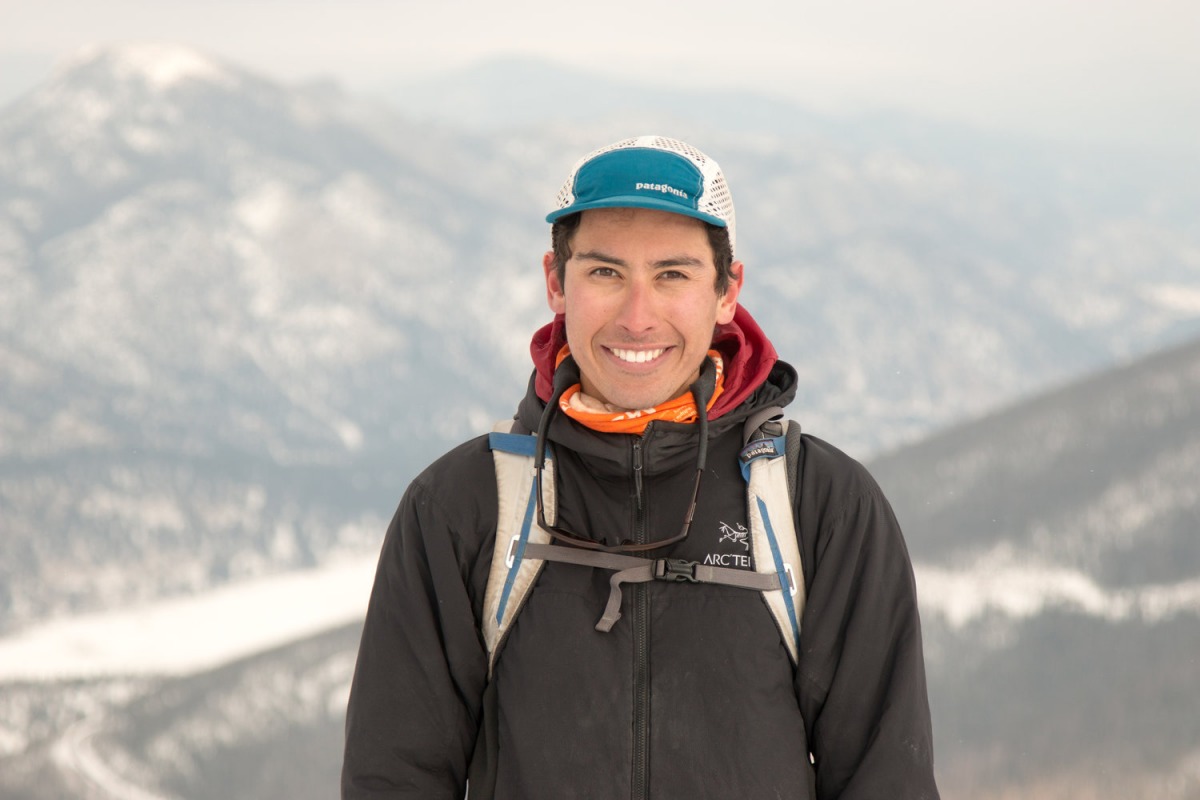
Aidan Goldie is a Basalt-based backcountry skier and photographer. When he is not climbing and descending peaks in the American West, he is an outdoor educator, working with schools and nonprofits guiding groups through the Colorado wilderness.

